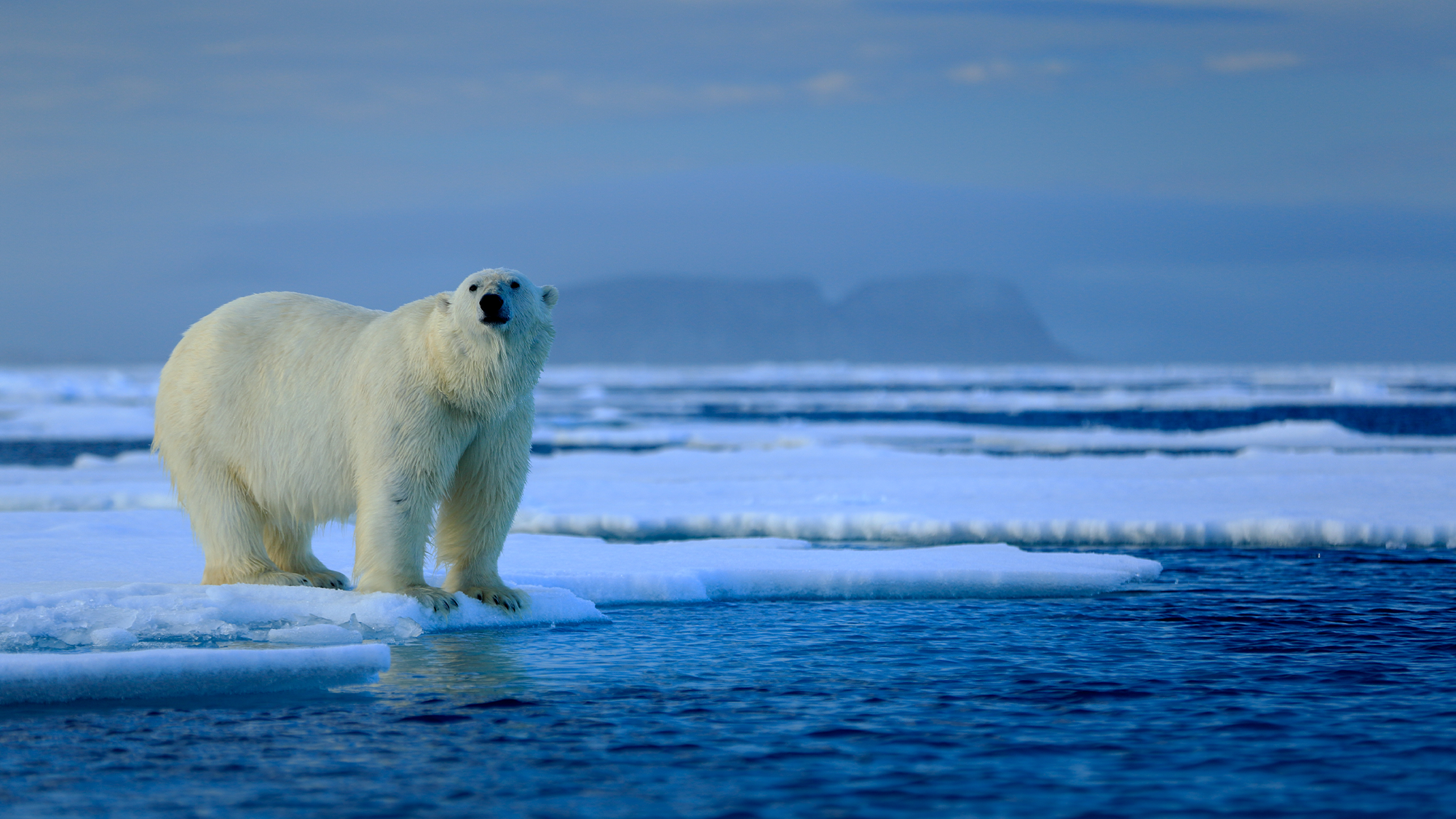

The decades-old international treaty that banned ozone-depleting substances has successfully averted huge amounts of sea ice loss—delaying the first ice-free Arctic summer by as much as 15 years, according to a new study. The study published May 22 in the journal Proceedings of the National Academy of Sciences (PNAS) found that regulating these harmful substances helped delay further globalc heating.
[Related: Fixing the ozone hole was a bigger deal than anyone realized.]
In 1985, scientists first discovered a hole in the ozone layer over Antarctica on the Earth’s south pole. Representatives from countries around the world gathered to craft a treaty to protect the ozone layer, which shields the planet from harmful levels of ultraviolet radiation from the sun. The resulting Montreal Protocol was signed in 1987 and went into effect in 1989 with the purpose of reducing atmospheric concentrations of ozone-depleting substances (OSDs) that were commonly used in refrigerators, air conditioners, fire extinguishers, and aerosols. It remains the only United Nations treaty ratified by every country in the world.
This new study demonstrates that the treaty’s impact depends on future emissions and the impact goes as far north as the Arctic.
“The first ice-free Arctic summer–with the Arctic Ocean practically free of sea ice–will be a major milestone in the process of climate change, and our findings were a surprise to us,” study co-author and Columbia University geophysicist Lorenzo Polvani said in a statement. “Our results show that the climate benefits from the Montreal Protocol are not in some faraway future: the Protocol is delaying the melting of Arctic sea ice at this very moment. That’s what a successful climate treaty does: it yields measurable results within a few decades of its implementation.”
According to Polvani and other climate scientists, the rapid melting of sea ice in the Arctic is the largest and most clear sign of human-made climate change. The first completely ice-free Arctic summer will likely occur by 2050, largely due to increasing carbon dioxide concentrations in the atmosphere. Other powerful greenhouse gasses like ODS’ also contributed to this warming, but their concentrations in the atmosphere began to decline in the mid-1990s.
In this new study, the two authors analyzed new climate model simulations and found that the changes implemented by the Montreal Protocol is delaying the first appearance of an ice-free Arctic summer by up to 15 years, depending on future carbon dioxide emissions. They compared the estimated warming from ODS’ with and without the Montreal Protocol under two scenarios of future carbon dioxide emissions from 1985 to 2050. If the Montreal Protocol had not been enacted, the estimated global mean surface temperature would be about 0.9°F warmer and the Arctic polar cap would be almost 1.8°F warmer in 2050, according to their results.
[Related: Fixing the ozone hole was a bigger deal than anyone realized.]
“This important climate mitigation stems entirely from the reduced greenhouse gas warming from the regulated ODSs, with the avoided stratospheric ozone losses playing no role,” co-author and University of Exeter applied mathematician and atmospheric scientist Mark England said in a statement. “While ODSs aren’t as abundant as other greenhouse gasses such as carbon dioxide, they can have a real impact on global warming. ODSs have particularly powerful effects in the Arctic, and they were an important driver of Arctic climate change in the second half of the 20th Century. While stopping these effects was not the primary goal of the Montreal Protocol, it has been a fantastic by-product.”
Both authors stressed the importance of remaining vigilant to atmospheric concentrations as the ozone layer is healing, especially due to a slight rise in ODS concentrations from 2010 to 2020. In 2016, an amendment to the Montreal Protocol (called the Kigali Amendment) that required the phase out of the production and consumption of some hydrofluorocarbons (HFCs) was added. While HFCs do not directly deplete ozone, they are powerful climate change-inducing gasses which can accelerate warming. An uptick in CFC use was detected in 2018 and tracked to China, but that was quickly fixed. Scientists say that the Kigali Amendment is estimated to avoid 0.5–0.9°F of warming by 2100, not including contributions from HFC-23 emissions.
